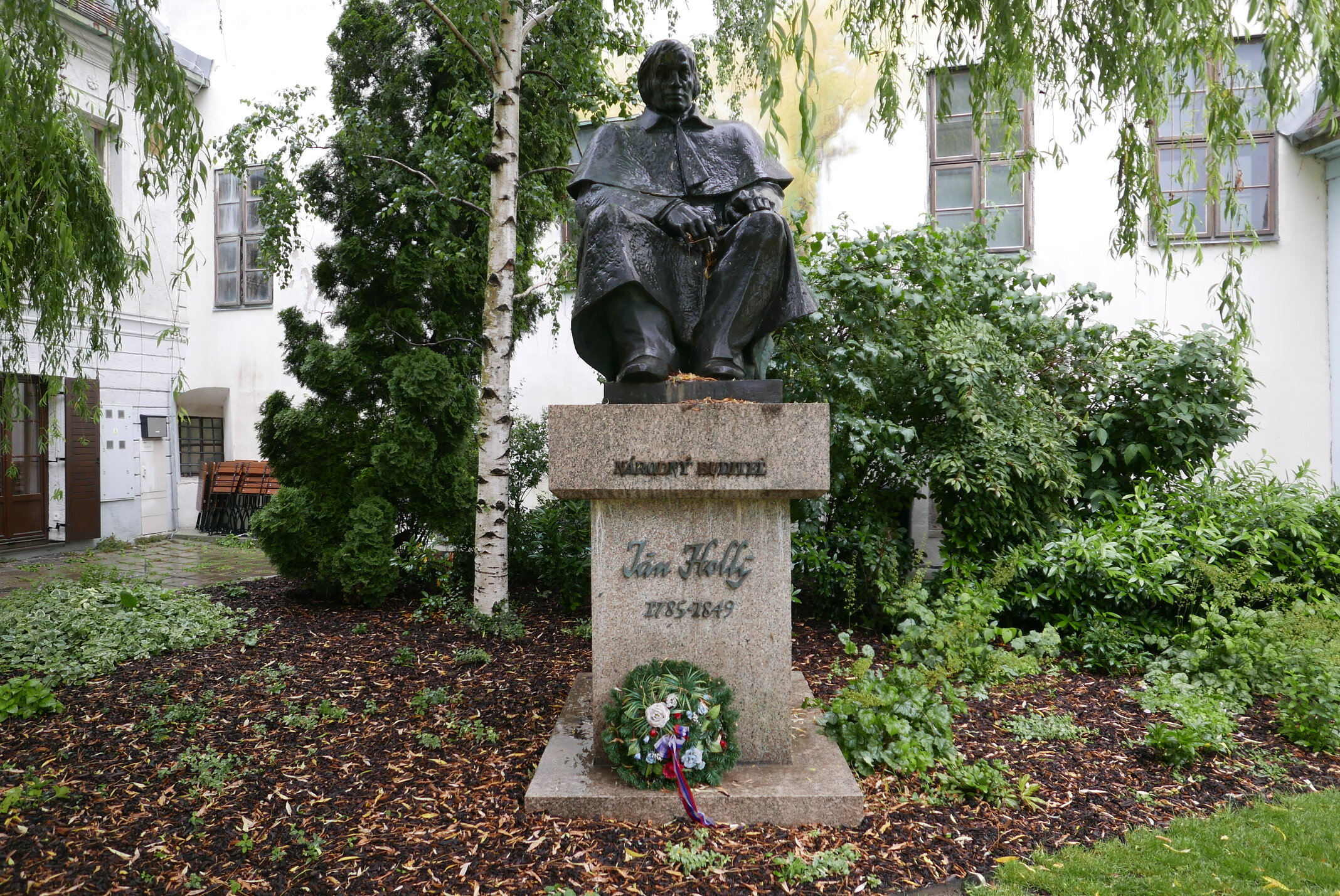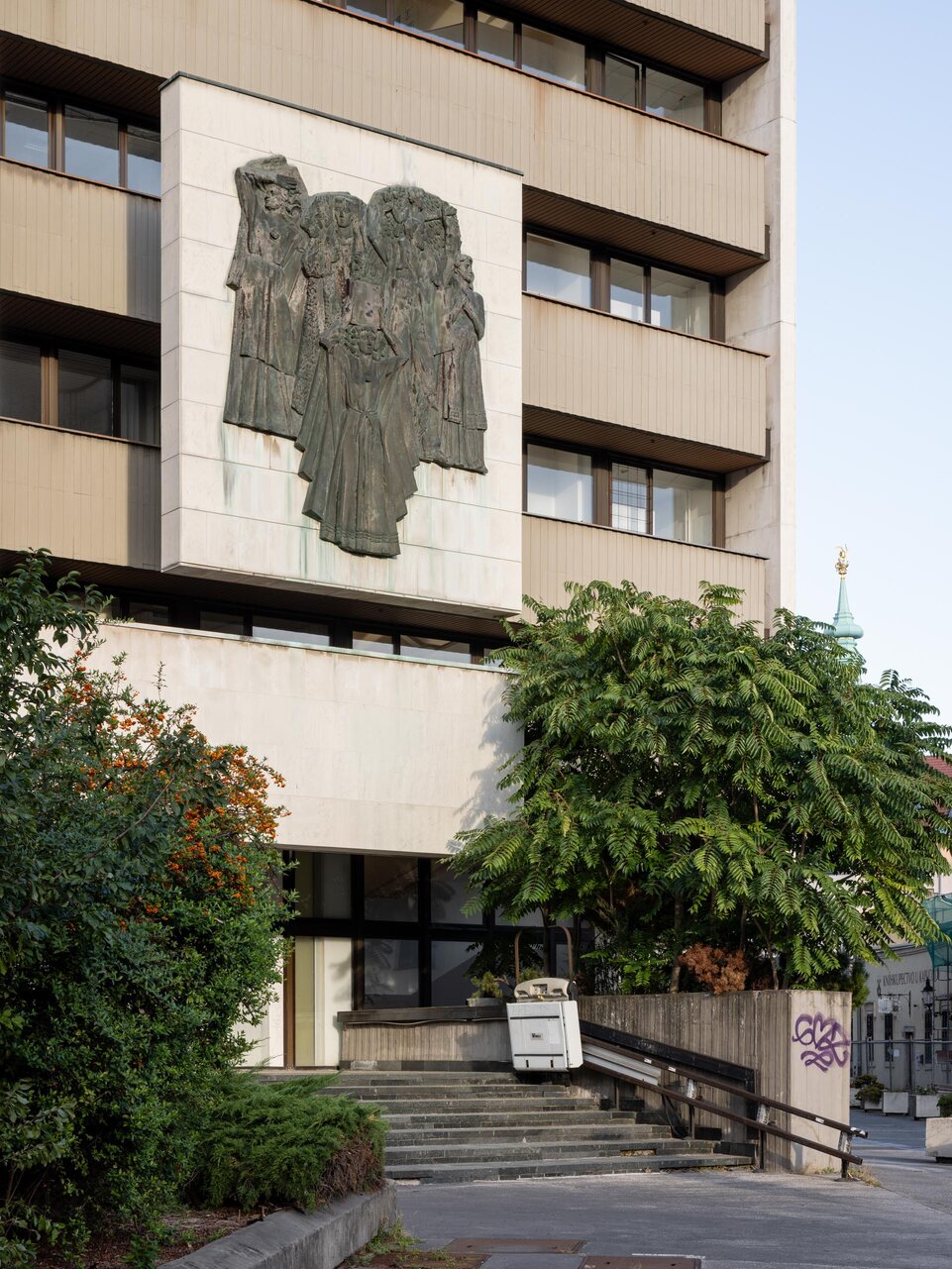The fountain in the courtyard of Zichy Palace was created during the historical building’s reconstruction into the House of Civil Ceremonies, the objective of which was to create a dignified and solemn space for ceremonies such as weddings, jubilees, and the personal or communal celebration of newborn children. The restoration was related to the socialist practice of replacing traditional religious ceremonies with civil ones, thereby eroding the importance of religious life and the church within society. Accordingly, communist ideology required the substitution of churches and temples with houses of ceremonies.
Gavula based his design on the building’s function, drawing inspiration from the well-known shape of a vernacular and profane symbol of happiness – the horseshoe.
The minimalist, geometric, dynamic composition comprises three interlocking horseshoe shapes on a circular base, at the centre of which is a historical stone segment – a mascaron. The fountain is a fine example of an adept blend of modern design with historic architecture, its scale in proportion with the original building, not conflicting with it. It sits on the surface of the courtyard and, like a labyrinth, organically merges with the past. The palace courtyard is an area for families and friends to meet, receive congratulations, and await their ceremony, and the fountain adds a positive, joyful atmosphere to such occasions.
Authors of the adaptation of the historic palace into a house of ceremonies were the architects R. Janák, O. Janáková, and A. Tomašáková, for which they received the 1991 Dušan Jurkovič Prize.
VB
Research status as of 31 December 2023.



